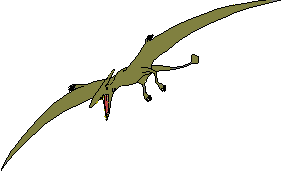
If those flying dragons over Los Angeles were not enough, we now have another problem with modern pterodactyls. The ropen, which was supposed to keep out of sight in remote jungles of Papua New Guinea, has popped up in a new book: Searching for Ropens and Finding God.
What’s the problem? The Rhamphorhynchoidea suborder of pterosauria, what common people call long-tailed pterodactyls. Those were supposed to mostly have gone extinct before the short-tailed pterosaurs dominated the skies, tens of millions of years ago. So why do ropens dominate the skies, at least in the dark of night and in remote areas of published cryptozoology? Those Rhamphorhynchoids were supposed to be the first ones to have gone extinct.
But the book makes it clear that long tails dominate the night skies of our modern world: “A twenty-to-one ratio leaves no doubt: Long tails dominate.” Species of that suborder had few head crests, according to fossils, yet Searching for Ropens and Finding God makes it clear that many modern ropens do have head crests.
One paleontologist mocked the ropen reports, labeling those reported flying creatures “monsters,” and pointing out that they are unlike what the experts know from the fossils. Yet if all paleontologists could agree on one thing about pterosaurs, it may just be this: If any pterosaurs survived into the modern day, they would be expected to be unlike what the experts know from the fossils. So much for the science of extinction.


